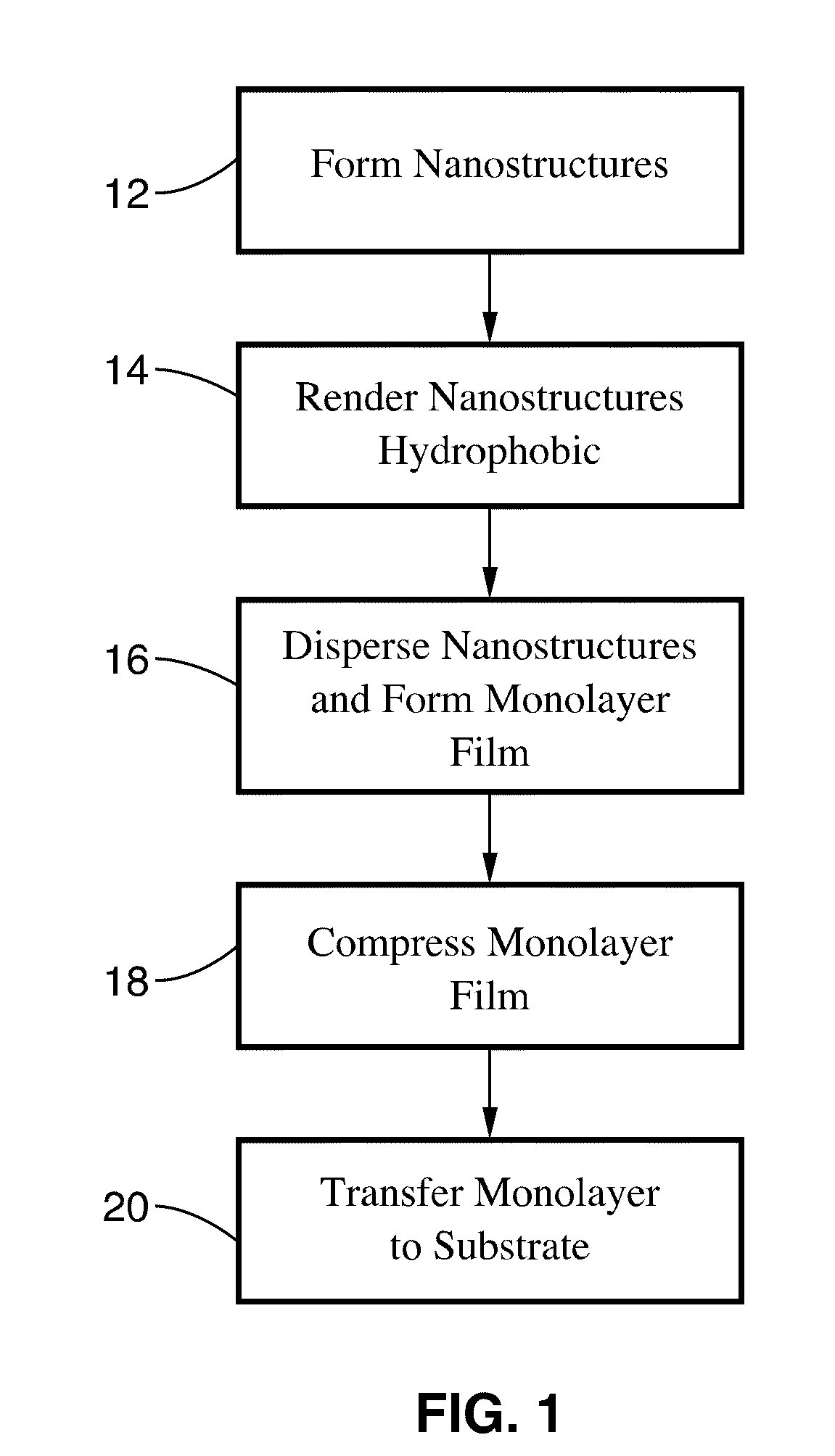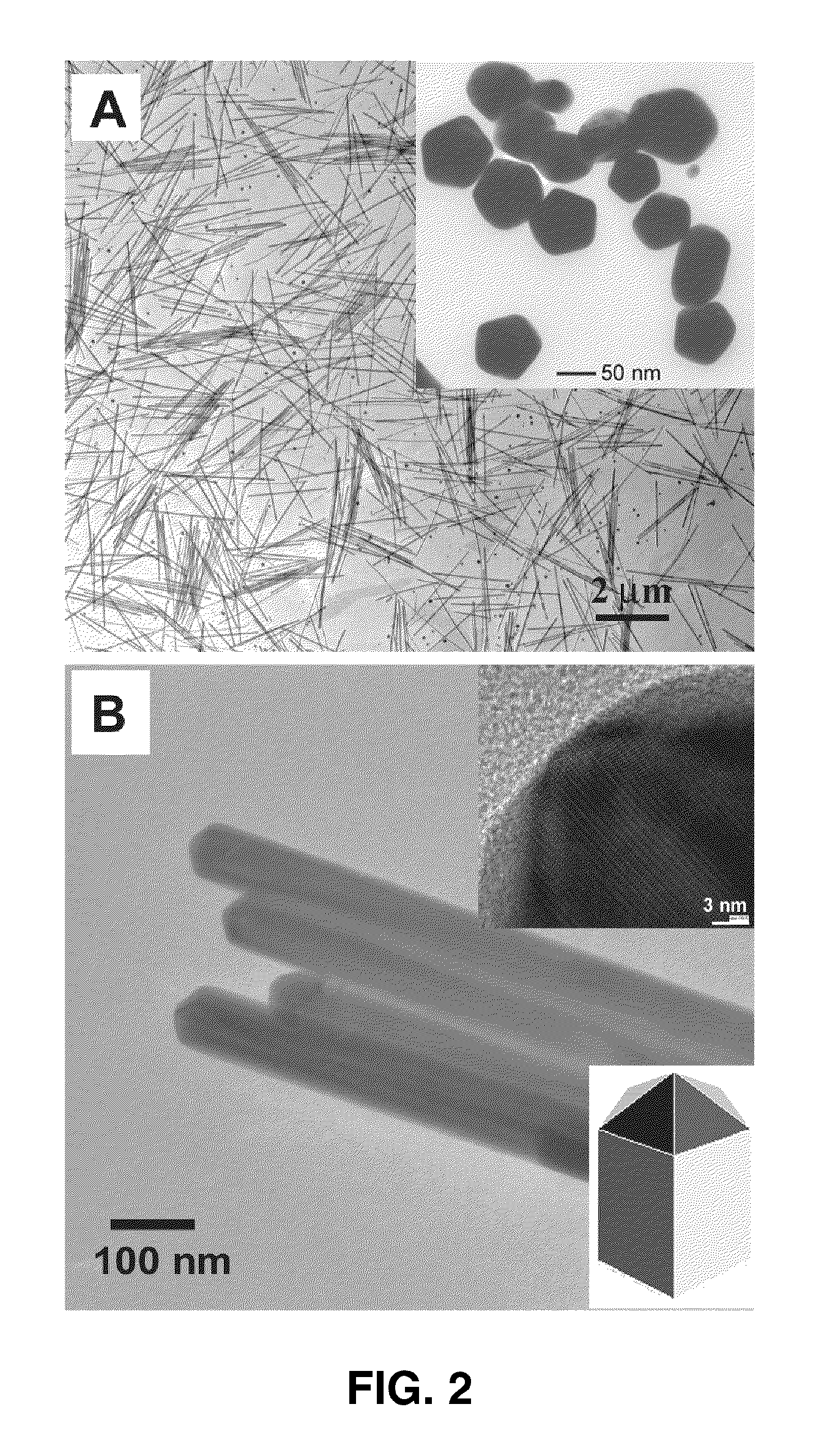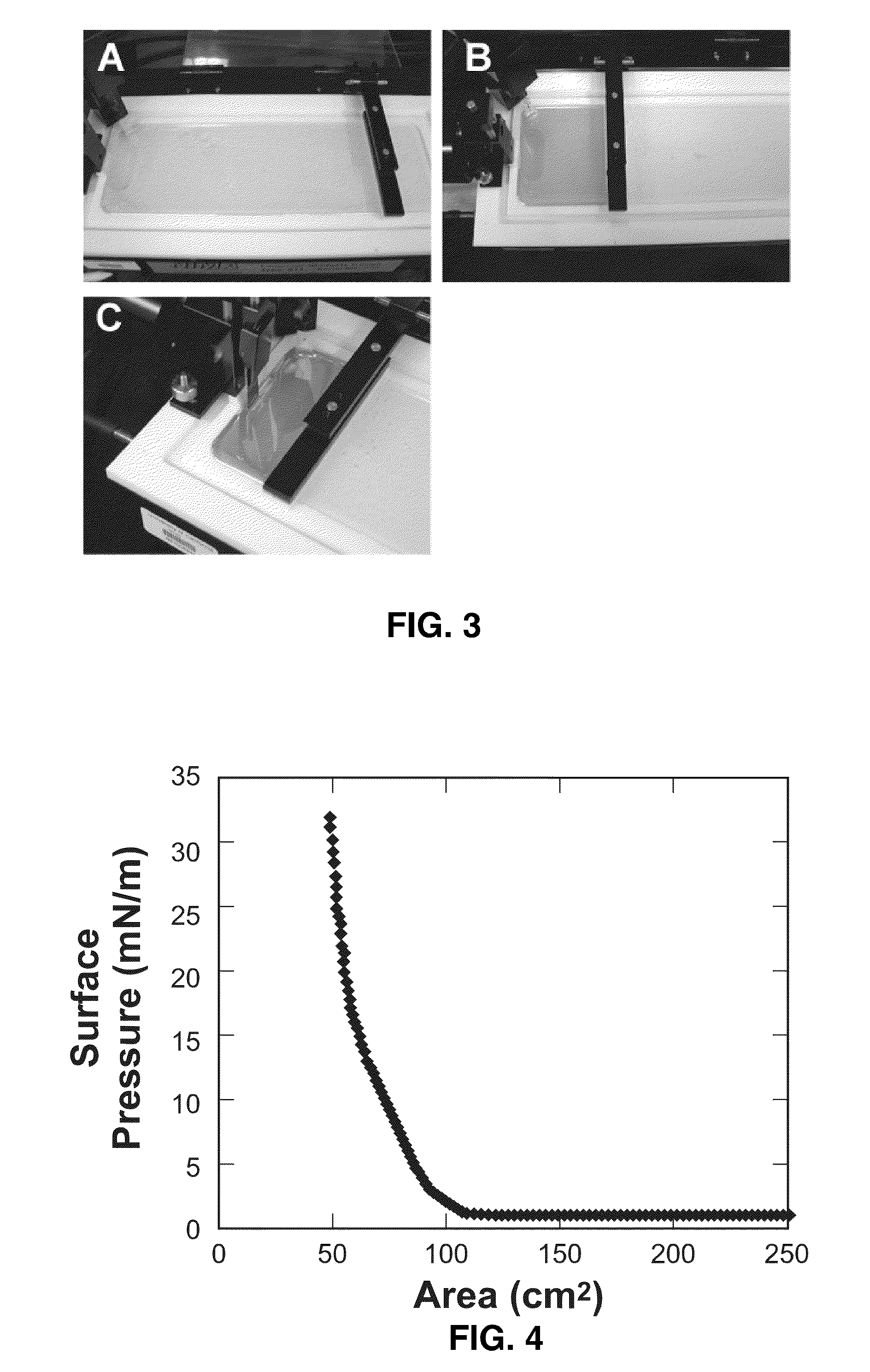Langmuir-blodgett nanostructure monolayers
a nanostructure and monolayer technology, applied in the field of anisotropic building blocks into functional nanoscale assemblies, can solve the problems of inability to fully understand the mechanism of shaped nanocrystal growth, unable to meet the needs of metal systems, and little attention devoted to the self-assembly of rod-shaped nanoparticles (nanorods) and other shapes, and achieves high reproducibility and well-defined, large field enhancement, and high sensitivity.
- Summary
- Abstract
- Description
- Claims
- Application Information
AI Technical Summary
Benefits of technology
Problems solved by technology
Method used
Image
Examples
example 1
[0071]In the following discussion, we report our success with utilizing the foregoing processes to assemble aligned monolayers (with area over 20 cm2) of silver nanowires that are ˜50 nm in diameter and 2-3 micrometers in length. These nanowires (characterized by pentagonal cross-sections and pyramidal tips) were close-packed as parallel arrays, with their longitudinal axes aligned perpendicular to the compression direction. The resulting nanowire monolayers can serve as good surface enhanced Raman Spectroscopy substrates, exhibit large electromagnetic field enhancement factors (2×105 for thiol and 2,4-dinitrotoluene, 2×109 for Rhodamine 6G) and can readily be used in ultrasensitive, molecular-specific sensing utilizing vibrational signatures.
[0072]Silver nanowires were prepared using poly(vinyl pyrrolidone) (PVP) as the capping agent. The as-prepared samples were purified to remove spherical nanoparticles. The resulting nanowires were uniform in both diameter (45.3±3.6 nm) and aspe...
example 2
Ag Nanowire Synthesis
[0084]Silver nanowires were prepared via the solution-phase polyol process, where silver salt is reduced in the presence of a stabilizing polymer. A solution of poly(vinyl pyrrolidone) (0.36M, 5 mL, MW=55,000, Aldrich) was prepared using anhydrous ethylene glycol (Aldrich) as the solvent and subsequently heated to 160° C. A room temperature solution of silver nitrate (Alfa Aesar) dissolved in ethylene glycol (0.12M, 2.5 mL) was then added drop-wise into the hot PVP solution at a rate of approximately 0.125 mL / min. Heat and stirring were kept constant during this step. Upon initial addition of silver nitrate to the PVP, the solution immediately turned a bright yellow color, indicating the formation of silver seed particles. As the addition proceeded, the solution underwent a series of color changes: orange, red, bright green, brown, and finally opaque olive green. An opaque gray-green solution containing a white iridescent precipitate indicated the formation of s...
example 3
Ag Nanowire Surface Functionalization
[0086]For Langmuir-Blodgett experiments, the surface of the nanowires must be hydrophobic. We functionalized our silver nanowires using long-chain alkanethiols, which readily adsorb onto the nanowire surface and displace PVP. A 100 μM solution of 1-hexadecanethiol in chloroform was added to the wire solution in a 1:1 ratio and then sonicated for approximately 5 minutes. After at least 10 hours, the solution was then transferred into glass vials and centrifuged (3.3 krpm, 15 minutes). The precipitates were collected and redispersed in chloroform. The hydrophobic silver wires readily precipitate out of chloroform as a beige solid. This process was repeated approximately six times to remove any excess thiol. The final solution appeared opaque gray or tan.
PUM
 Login to View More
Login to View More Abstract
Description
Claims
Application Information
 Login to View More
Login to View More - R&D
- Intellectual Property
- Life Sciences
- Materials
- Tech Scout
- Unparalleled Data Quality
- Higher Quality Content
- 60% Fewer Hallucinations
Browse by: Latest US Patents, China's latest patents, Technical Efficacy Thesaurus, Application Domain, Technology Topic, Popular Technical Reports.
© 2025 PatSnap. All rights reserved.Legal|Privacy policy|Modern Slavery Act Transparency Statement|Sitemap|About US| Contact US: help@patsnap.com



